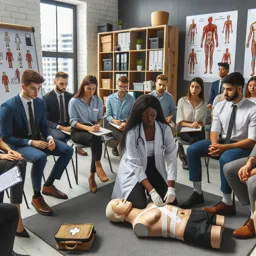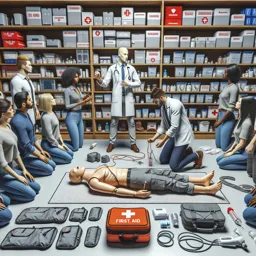Introduction to Wilderness First Aid
Exploring the great outdoors comes with inherent risks. Whether hiking, camping, or embarking on remote adventures, accidents and health incidents can occur far from professional medical care. Wilderness First Aid is the specialized knowledge and skill set required to manage injuries and illnesses in remote environments where traditional help may be hours—or days—away.
Why Wilderness First Aid Matters
In the wilderness, everyday first aid must adapt to unique challenges, such as limited resources, unpredictable weather, and delayed evacuation times. A simple ankle sprain or a deep cut can pose significant threats when you’re miles from civilization. Proper wilderness first aid skills help stabilize conditions and may even save lives by bridging the gap until help arrives.
Key Components of Wilderness First Aid
- Assessment: Learn to quickly assess the scene for safety, evaluate the patient’s condition, and determine potential threats to life.
- Primary Care: Apply life-saving interventions such as CPR, wound management, bleeding control, and improvised splinting with materials at hand.
- Environmental Challenges: Address threats such as hypothermia, heat-related illness, and dehydration using field-appropriate methods.
- Transport Decisions: Decide when and how evacuation is necessary, and communicate effectively if rescue support is needed.
Essential Gear for Wilderness First Aid Kits
Unlike traditional first aid kits, a wilderness kit should include items for improvisation, such as multi-use bandages, duct tape, moleskin for blisters, and tools for making splints or slings. Consider adding:
- Personal medications
- Water purification tablets
- Emergency blankets
- Gloves and barrier devices
- Signaling devices for rescue
Self-Care and Prevention
The best emergency is the one that never happens. Learning preventive measures, such as proper hydration, appropriate clothing, terrain awareness, and regular check-ins with group members can dramatically reduce risks.
Where to Learn More
Enrolling in a reputable wilderness first aid course is highly recommended for those spending time outdoors. In-person training allows for practice of hands-on skills and scenario-based learning, building confidence for real-life emergencies.
Conclusion
Wilderness First Aid equips you with the ability to act decisively and effectively when it matters most. With preparation, knowledge, and practical skills, you can be the difference between a bad situation and a safe outcome.




























